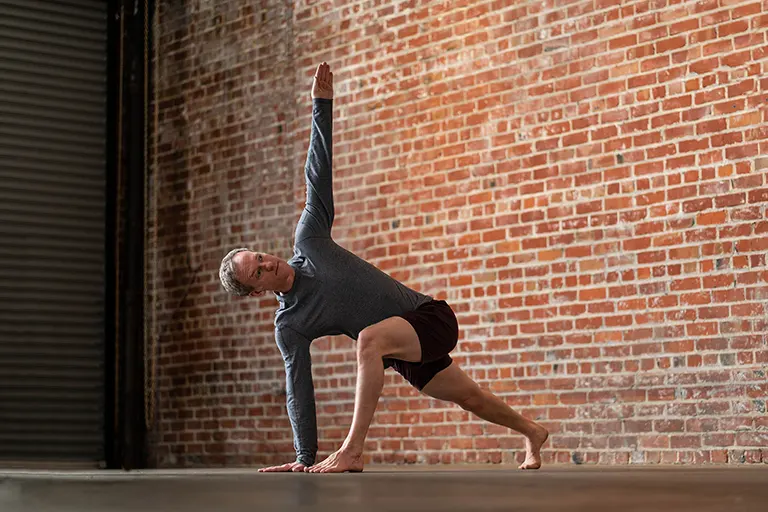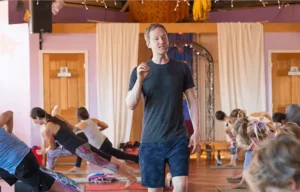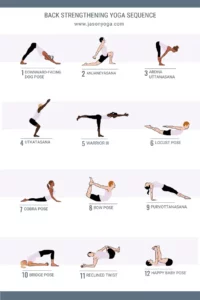Spring has sprung and all throughout yogaland, studios are hosting “detox flow” workshops that emphasize deep twists and side bends. And, no doubt, the vast majority of these workshops will declare that you need to keep your pelvis “stable” when you twist in order to keep your lower back and sacroiliac joints safe. Although the word “stable” in this context is slightly misleading, teachers are trying to keep their students from turning their pelvis when they rotate their spine. This is the way I taught twists for over 15 years — adamantly no less.
This is the point in the narrative where I tell you that I’ve changed my tune. I no longer think that the pelvis needs to stay fixed when the spine rotates. In fact, I prefer to allow my pelvis to rotate a little bit in the direction that my spine is twisting. This means that when I’m twisting to the right, I allow my pelvis to rotate slightly to the right. I know, I know — I don’t like change either. And, keeping the pelvis fixed has been the conventional wisdom in yoga for a while. But, hear me out while I make a few points.
The first thing to consider is that your pelvis and spine work best when they work together. Technically, the spine starts on top of the pelvis. But, in reality the spine and pelvis are structurally merged via the sacrum and coccyx — not to mention all the ligaments, tendons, and other soft tissues that bind the spine and the pelvis together. Moving your spine and pelvis together in an integrated, cohesive way is one of the most effective ways to minimize injuries since cohesive motion distributes the mechanical stresses of yoga postures. Too much concentrated stress in the sacro-lumbar and sacroilliac regions is more likely to create injuries than stresses that are more evenly distributed. This means that if you don’t let your pelvis rotate in the direction that your spine is rotating, you are more likely to concentrate stress in the sacro-lumber and sacro-illiac region.
This doesn’t mean that you can’t move the spine independently. You can. It simply means that the spine and pelvis should be on the same page. The pelvis should be doing at least a little bit of what the spine is doing, especially in demanding postures.
The second point to consider: Look at the relationship between your pelvis and spine in your forward bends and backbends. Do you inhibit the pelvis from moving in these postures, or do you move the pelvis and spine together in these postures? Chances are you initiate your forward bends and backbends by rotating your pelvis and spine simultaneously. In fact, if you did forward bends and backbends and you kept your pelvis fixed, you wouldn’t go very far and you’d create an enormous amount of undesirable stress on your lumbar. It’s the same when you twist.
The last two points are simple and telling. First, when you allow your pelvis to rotate slightly when you twist, you’ll probably move and breathe more freely. Second, when I talk to my students and colleagues that are physical therapists and orthopedists, they agree that allowing the pelvis to rotate in the direction the spine is twisting makes more sense than not allowing the pelvis to rotate at all.
Now, again, I’m going to flip the script a little. I don’t want to say that rotating the pelvis with the spine is the new, singular gospel that every yogi should follow every time they practice. Rather, I want to dispel the notion that keeping your pelvis fixed while twisting is inherently safer, more stable, or more dynamic because it’s not.
See also Yoga and Your Hips, Part I
Finally, I want acknowledge that after years and years and years of teaching postures one way, I changed my mind. All yoga teachers should afford themselves this right so that we continue to question our own assumptions. And, I want to give you a few postures to try so that YOU, yes, YOU, can determine the different ways that these two options feel in your body.
So, get your mat out, do a few hip openers to mobilize your hips and experiment with the following four twists. In the first phase of each posture, you’ll keep your pelvis fixed. In the second phase of each posture, you’ll allow your pelvis to rotate in the direction that you’re twisting. Take a few breaths in each posture and tune into the sensations of your entire body.
REVOLVED CHAIR POSE

Phase 1: Keep both knees in the same plane. This is the easiest way to assure that your hips are fixed (not rotating).
Phase 2: Allow the knee that you’re rotating away from to slide slightly forward. This allows your pelvis to turn into the twist slightly.
REVOLVED PRASARITA PADOTTANASANA
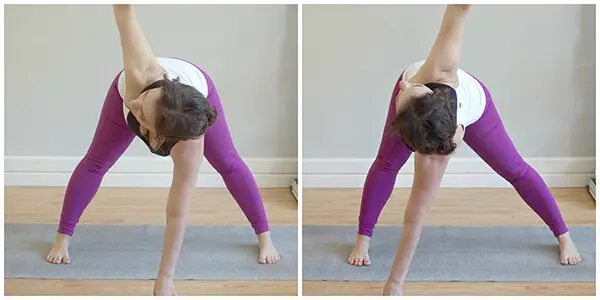
Phase 1: Place your hand on the back of your pelvis. Keep both hips level with each other. This will ensure that your pelvis is not rotating when your spine is rotating.
Phase 2: Keep your hand on the back of your pelvis and allow your pelvis to rotate in the direction that your spine is rotating. The hip on the side that you’re rotating toward will raise slightly. The hip that you’re rotating away from will slightly lower.
See also Yoga Podcast: Twisting, Strengthening, & Folding Your Spine
REVOLVED TRIANGLE POSE
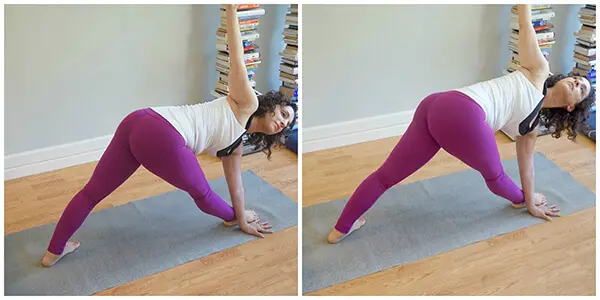
Phase 1: Place your hand on the back of your pelvis. Keep both hips level with each other. This will ensure that your pelvis is not rotating when your spine is rotating.
Phase 2: Keep your hand on the back of your pelvis and allow your pelvis to rotate in the direction that your spine is rotating. The hip on the side that you’re rotating toward will raise slightly. The hip that you’re rotating away from will slightly lower.
MARICHYASANA 3

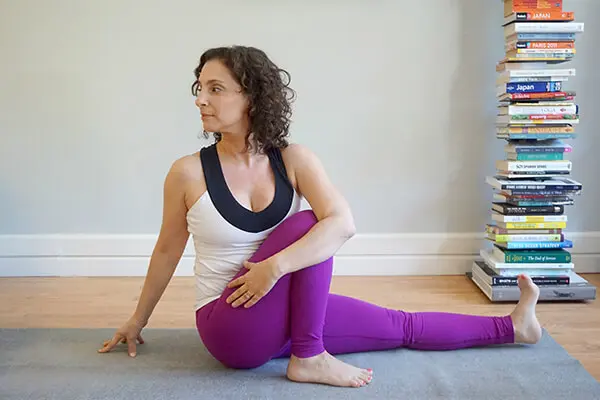
Phase 1: Sit with both hips equidistant to the front of your mat. Bend your right knee, draw your right heel toward your sitting bone and rotate to your spine to the right in marichyasana 3.
Phase 2: Begin with both of your hips equidistant to the front of your mat. Bend your right knee and draw your heel toward your sitting bone. Then, slide your left leg and left hip an inch or two further forward. This will rotate your pelvis slightly toward the right. Rotate your spine to the right to and do Marichyasana 3.
